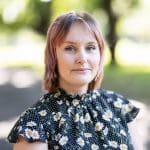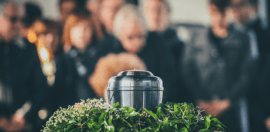Seven things the for-purpose sector can learn from the Census

29 June 2022 at 6:28 pm
There’s been a decrease in volunteers, an increase in Australia’s Aboriginal and Torres Strait Islander population, and more people have a mental illness, according to the latest data.
The first tranche of 2021 Census data has been released, and it has revealed a changing Australia.
Millennials have caught up to baby boomers as the largest generational group in the country, and the number of Australians identifying as having no religion has risen.
There were plenty of other insights within the treasure trove of data released on Tuesday. We’ve broken down some of the key statistics that are relevant to the for-purpose sector:
Volunteering
There has been a 19 per cent decrease from 2016 in the number of Australians doing unpaid voluntary work, with the total number now at just under 3 million. In addition, 2,476,681 people identified as providing unpaid assistance to others with a disability, long-term health condition or due to old age. Women still do the bulk of unpaid domestic work.
In a statement, Volunteering Australia said the decline was “not unexpected” but that the stats didn’t tell the full story of volunteering in Australia.
“New forms of volunteering are developing as volunteering evolves to meet the needs of the community,” the organisation said.
Housing
The census revealed a pretty even split between Australians owning their home outright (31 per cent), owning a home with a mortgage (35 per cent) and renting (30.6 per cent). However, that comes with a caveat as the proportion of homes owned outright in Australia has fallen over the past three decades, from 41 per cent in 1991, to 31 per cent in 2021. The percentage of homes owned under a mortgage has risen over the same time period, and is now up from 27.5 per cent in 1991.
Seven million Australians rent their home. The Census also revealed a decrease of more than 25,000 public housing households.
The majority of homes (70 per cent) were separate houses, 13 per cent were townhouses and 16 per cent were apartments. More than 56,000 Australians identified living in a caravan and just over 11,000 were classified as “improvised home, tent, sleepers out”. More than one million properties were vacant on census night – a statistic that PowerHousing Australia said was “still too high”.
“With rising rents, ultra-low vacancy rates and worrying trends in homelessness, governments need to examine ways to bring some of this underutilised housing stock online,” said PowerHousing CEO Nicholas Proud.
Disability
Data on disability was informed by questions around whether people needed assistance with core activities. According to the census, 1,464,415 people identified as needing this assistance. Of the total First Nations population, 8.2 per cent responded that they need assistance with core activities. The majority of people requiring assistance – 76.6 per cent – lived with family, while 19.4 per cent lived alone. The majority of people with disability lived in NSW.
Chronic illness/mental health
Over 8 million Australians told the census they have a long-term health condition. A number of conditions were listed on the census: 4,791,516 people had one of the listed conditions; 1,490,344 people had two; and 772,142 people had three or more. And just over 2 million people identified as having a long-term health condition that was not listed in the census question.
Significantly, more than 2.2 million people have a long-term mental health condition, including depression or anxiety, ahead of arthritis, asthma and diabetes.
Sexuality and gender
For the first time, the 2021 Census allowed all respondents to select from three options on a question about sex: male, female, and non-binary. However, there have been some concerns over the way this question was phrased, with some advocates arguing they would not have elicited accurate responses.
LGBTIQ advocacy group Just Equal told the Sydney Morning Herald that the question asking people whether they identified their sex as male, female or non-binary excluded transgender and intersex people. ABS statistician David Gruen has said that the questions were not chosen by the ABS but rather by “the Parliament and the government”, who directed the ABS “to ask a question on sex, but not on gender and not on sexual orientation”.
Data about the proportion of the population who reported being non-binary will be released in September 2022.
First Nations People
There was a more than 25 per cent increase in the number of Aboriginal and Torres Strait Islander people counted on census night, with the population now at 812,728 people, or 3.2 per cent of the total Australian population.
But Professor Bronwyn Carlson, writing in The Conversation, criticised the census for not providing enough information on the lives of Indigenous people. The census did reveal that the median age for Aboriginal and Torres Strait Islander people has increased to 24, up from 23 at the last census.
Families
Australian families are as diverse as the people that make them up. There are just over 1 million single parent families in Australia, and 5.5 million couple families. The census revealed that 43.7 per cent of Australian families are couples with children, while 15.9 per cent are single parent families and 38.8 per cent are couples with no children. Following the 2017 amendments to the Marriage Act 1961, which enabled marriage equality, 23,914 same sex marriages were counted in the 2021 Census. Overall, 8,747,135 people are married, 2,168,351 people are in a de facto relationship and 7,863,327 people are not married, according to the data.







